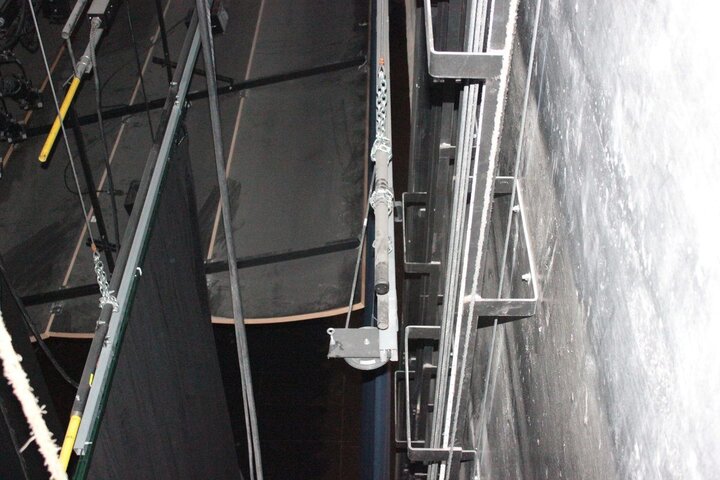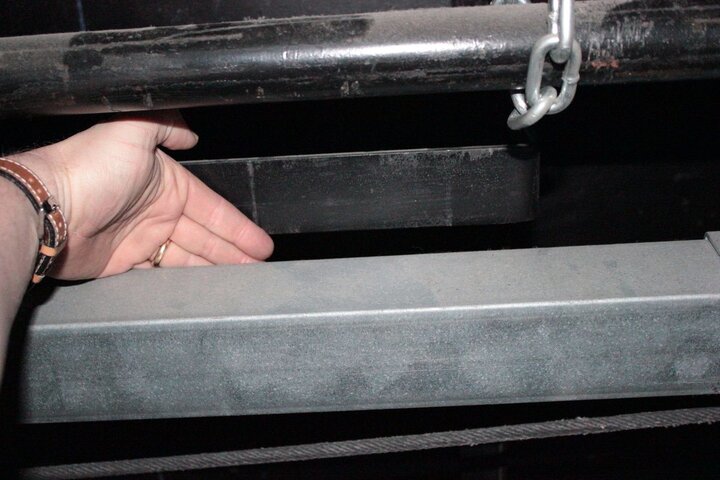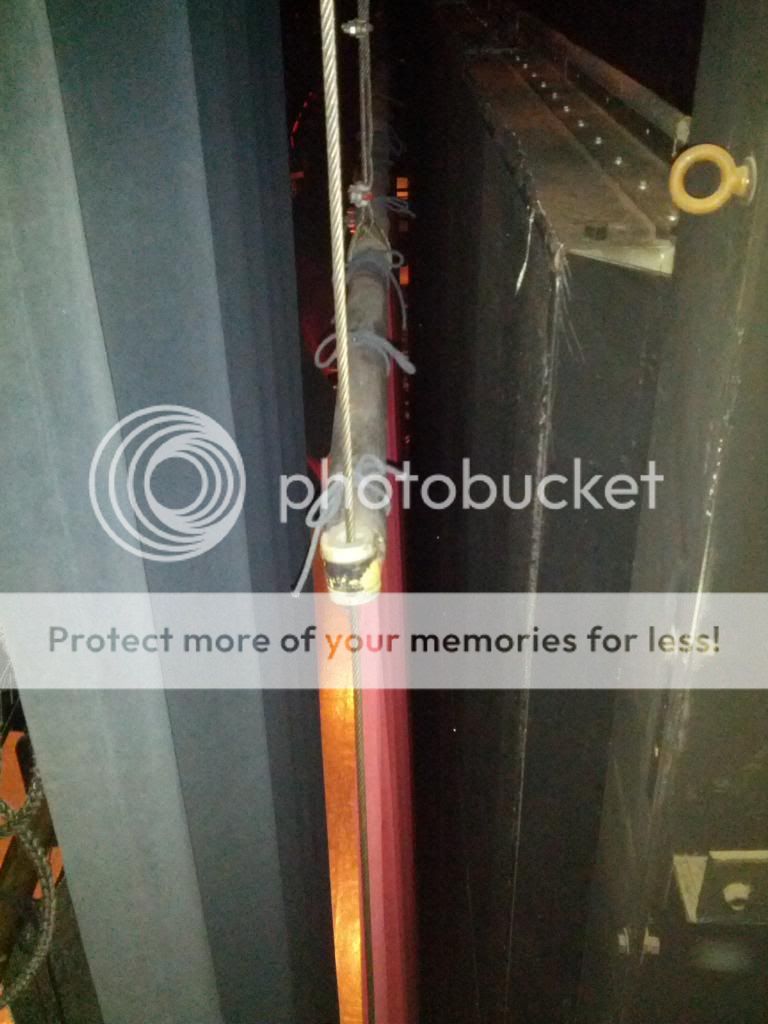Chris Chapman
Active Member
History on this one: Back in the day when this facility was being built it was about $3 million over budget. The consultants "wisely" shrunk the building to save money, but did not change any of the lineset spacing or what was to be hung where. Lineset 1 was Valance, 2 was Main, 3 E1, etc. A folding orchestra shell is in place. With the original design intent, it is impossible to close the main in front of the deployed shell. Answer: Swap Valance with Main and success. Success for 15 years. Jump ahead to this week when we replaced all of our rags for fire code compliance. We shifted from 25 oz. natural fibers to 20 oz. synthetics. NOW what happens is as the main flies in at speed, and clears the proscenium, it encounters air flow draw from the house, and ever so slightly drifts downstage as it comes in. Problem #1, the draw is significant enough that the traveller track now impacts the lattice work of the fire curtain arbor. At rest, the track has literally the thickness of my hand (3/4 of an inch?) clearance.
What is a good approach to solving this problem?
We could cut out the offending lattice work... (Bad idea)
We could install a guide wire that draws the offstage end of the main slightly upstage as it flies? This could enduce a twist into the lineset which could eventually be more problematic. (Dirty solution.)
We could rehang the curtains back to the original design with the Main on #2 and not fly with our orchestra shell in anymore. (Ugly solution.)
See attached pics and comment away...
What is a good approach to solving this problem?
We could cut out the offending lattice work... (Bad idea)
We could install a guide wire that draws the offstage end of the main slightly upstage as it flies? This could enduce a twist into the lineset which could eventually be more problematic. (Dirty solution.)
We could rehang the curtains back to the original design with the Main on #2 and not fly with our orchestra shell in anymore. (Ugly solution.)
See attached pics and comment away...





